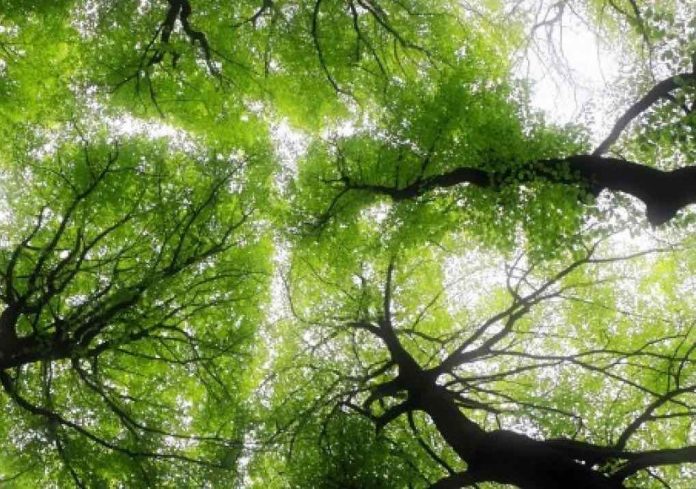Across the planet, old growth is being lost to logging and land clearing, and a lethal list of disturbances stoked by climate warming that disproportionately take out big old trees, including drought, heat, bugs, lightning, wind storms, floods and fire.
The world’s forests are getting younger and shorter as a result.
Already reduced by about a third in area by logging and land use change since 1900, there will be fewer big trees 140 years old or older as the climate warms, scientists found in a paper published May 29 in the peer-reviewed journal Science.
“We are losing and probably are going to be continuing to lose old-growth forests, globally,” said Nate McDowell, lead author on the paper and staff scientist at the Pacific Northwest National Laboratory.
The climate these trees sprouted in is not the climate in which they endure today. The extremes are more extreme — whether heat, bugs, drought, windstorms or fires. For these big old trees, the world has literally changed right out from under them. Big trees are caught in a downward spiral: Losing the world’s big carbon sinks in old-growth forests is further stoking climate warming that is amping up all the forces particularly lethal for big trees.
A big, tall tree is a lightning rod and a sail for high winds. The plumbing within a tree that enables it to lift water hundreds of feet in the air is more susceptible to breakage under drought stress. Bugs preferentially target big old trees. And while larger trees with their thick bark tend to be fire resistant, bigger hotter fires are roasting the survivors of what used to be typical blazes.
The more these trees die, the more carbon goes into the atmosphere, stoking global warming even more. “It is a feedback loop that makes it worse,” McDowell said. In the Klamath region of northern California and southwest Oregon, the mature forests have been so besieged by repeated fire they are lost forever: they will not regrow to big trees, or even forests at all.
There are exceptions, of course, to the rout of big old trees, including the old growth in the gloaming of the Pacific Northwest’s rainforests. But these forests are not forever immune from the trends scientists identified. The drought of 2015 saw even parts of the rainforest in Olympic National Park burn in the ironically named Paradise fire.
Droughts are punishing
The very structure of big trees puts them at risk, said Kristina Anderson-Teixeira, another author on the paper. Her lab at the Conservation Ecology Center at the Smithsonian Conservation Biology Institute in Front Royal, Va., in 2015 documented how drought particularly punishes big trees in forests worldwide.
“The assumption of a lot of people was that the larger trees have deeper roots and better access to water, and therefore they are going to do better in drought,” Anderson-Teixeira said. But it’s just the opposite, because of how trees work.
Trees move water from the ground to their crowns by continuous vertical piping in their trunks in cells called xylem.
Water moves up these cells both because of the sticky property of water molecules, and the pull of evaporation to the atmosphere, through tiny pores on the bottoms of leaves, called stomata. On a hot day, in dry conditions, moisture can be actively sucked out of a tree to the point it can’t at great height, against the forces of friction and gravity, lift enough water fast enough. Air bubbles result — a catastrophe in the tree’s plumbing.
In a drought, the damage is worse because a tree also can’t replace the water taken from it. It shuts its stomata in defense, but then it can’t make food from carbon dioxide in the atmosphere, through photosynthesis. With no food or water, the tree first stops growing. Then it starts to shed leaves or needles. Then, it starts to die. First by degrees. Eventually, to the ground.
In some forests, the carbon dioxide people are pumping into the air by fossil fuel burning, combined with longer growing seasons caused by climate warming, is helping trees bulk up and grow.
But more carbon in the atmosphere — the so-called CO2 fertilization effect — doesn’t work for trees that are so drought and heat stressed they can’t breathe. That’s when big trees die fast, and first.
Not every stressed or injured tree will die; a lot will die back, but persist, and survive, notes Neil Pederson, senior ecologist at the Harvard Forest and a dendrochronologist who has studied tree stress all over the world. He warned against an overly bleak interpretation of how trees are managing in a warming world. He has documented trees that are masters of resilience, dying back and recovering, over hundreds of years. Shedding limbs and dying back from the top is an adaptive strategy for trees in tough spots and tough times.





























